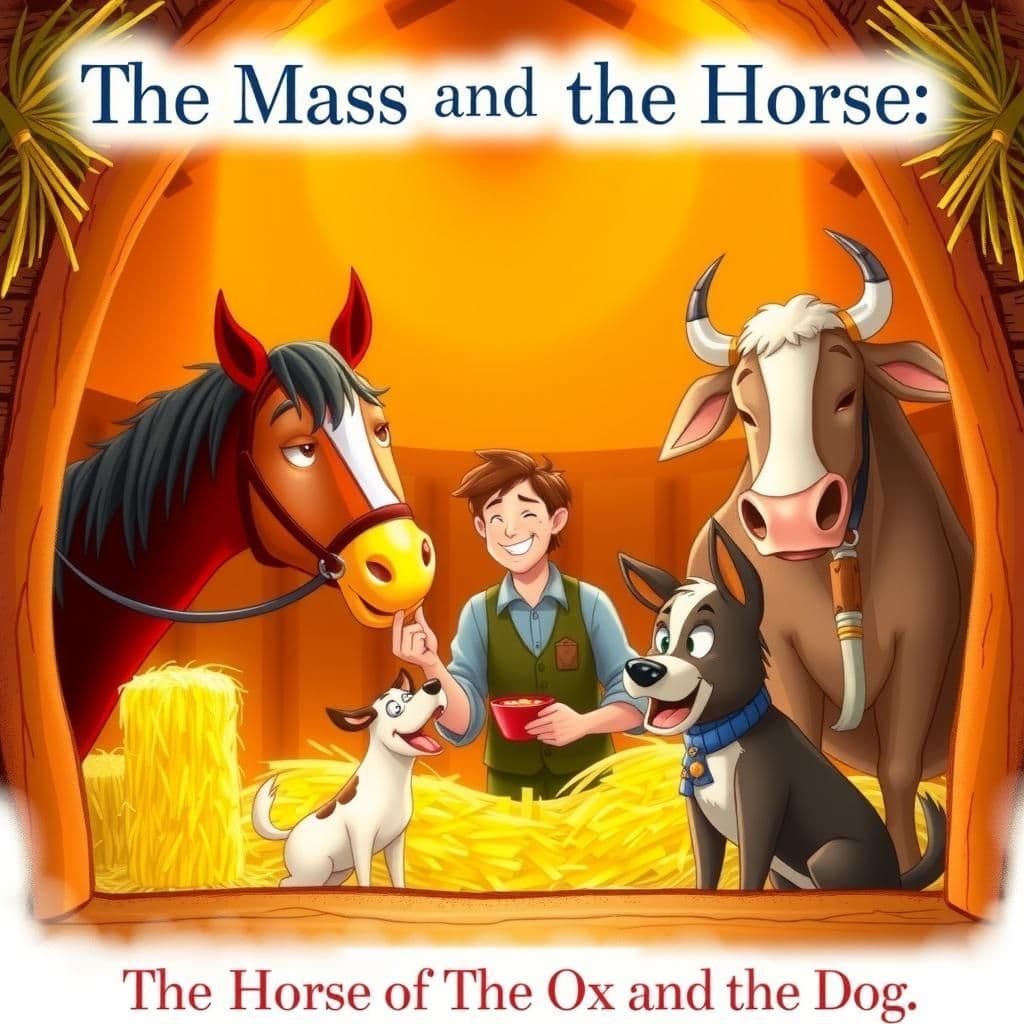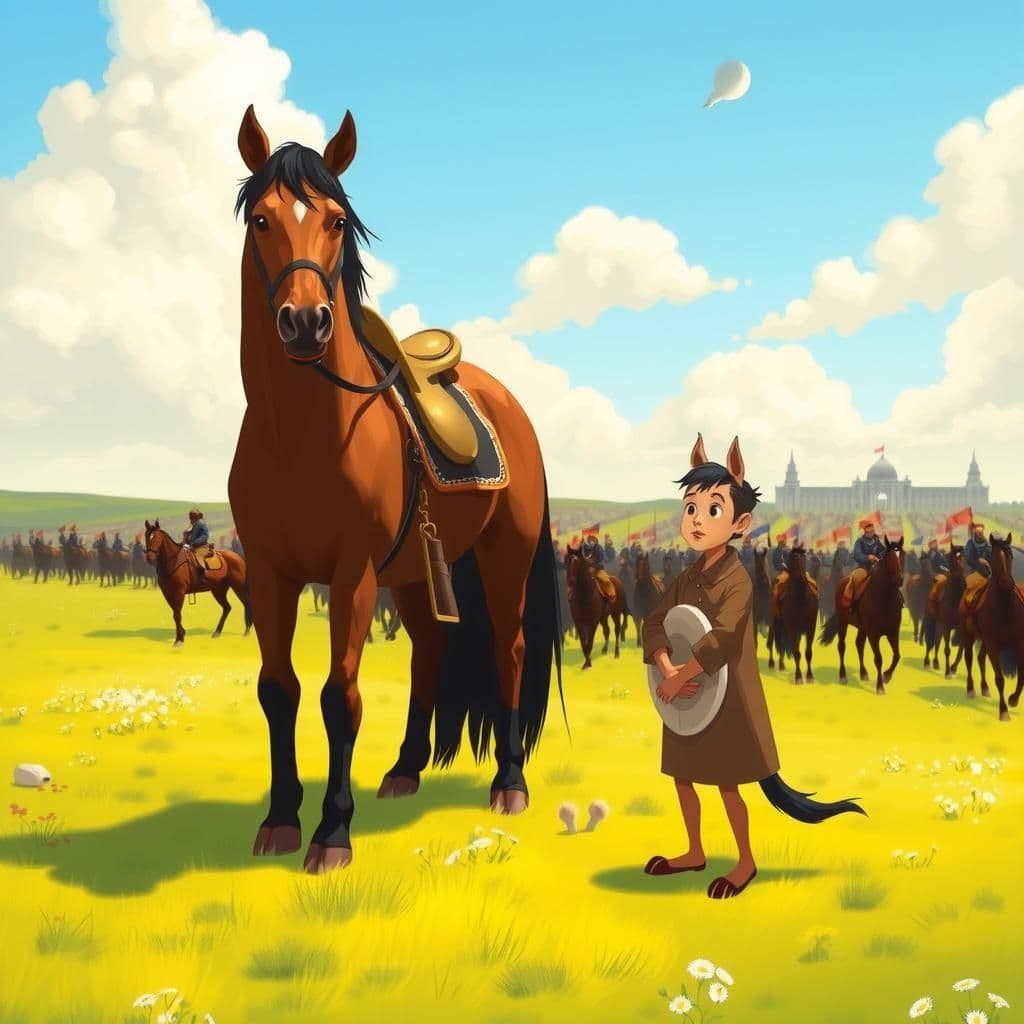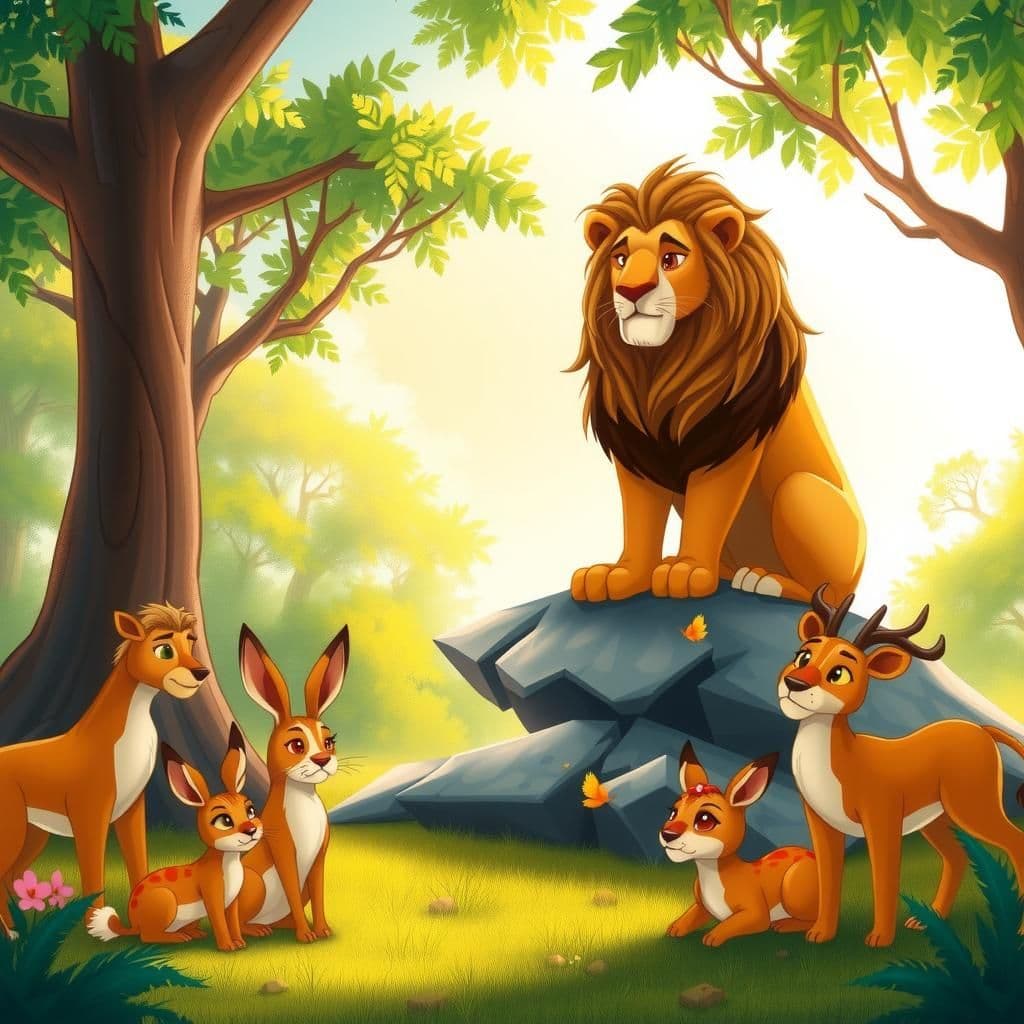The Man the Horse the Ox and the Dog

Story Summary
In "The Man the Horse the Ox and the Dog," a heartwarming tale from classic moral stories, a horse, ox, and dog find refuge from the cold with a kind man who provides them food and warmth. In gratitude, they divide the man's life span among themselves, each infusing their portion with attributes that reflect human nature at different stages, offering young readers valuable lessons about the impetuousness of youth, the industriousness of middle age, and the irritable nature of old age. This unique moral story serves as an entertaining and educational reminder of how our characteristics shape our lives.
Click to reveal the moral of the story
The story illustrates how the stages of a man's life are influenced by the characteristics of the animals, reflecting the different traits and behaviors associated with youth, middle age, and old age.
Historical Context
This story is a fable that reflects themes of gratitude and the interplay between humans and animals, reminiscent of Aesop's Fables, which often convey moral lessons through anthropomorphized characters. It highlights the cultural significance of animals in folklore as symbols of various human traits and stages of life, a motif found in many traditions worldwide, including the Panchatantra from India and the fables of La Fontaine in France. The narrative serves as a commentary on human nature, suggesting that our characteristics are shaped by the influences of our formative experiences and relationships.
Our Editors Opinion
This fable illustrates the natural progression of human temperament through different life stages, reflecting how our experiences shape our character over time. In modern life, we can see this in a scenario where a young professional, in their early career, is overly ambitious and resistant to feedback, much like the horse; as they mature, they become dedicated and industrious, akin to the ox; and in later years, they may become more set in their ways, potentially resistant to change, similar to the dog. This highlights the importance of understanding and adapting to the evolving nature of ourselves and others throughout life.
You May Also Like

The Ass and the Charger
In "The Ass and the Charger," a seemingly privileged Horse is envied by an Ass, who believes the Horse's life is easy and carefree. However, when the Horse is killed in battle while serving a soldier, the Ass learns a valuable lesson about the burdens hidden beneath a luxurious facade, illustrating the timeless moral stories that reveal the complexities of life. This engaging moral tale serves as a reminder that even those who appear to be well-cared-for face significant sacrifices, making it an ideal bedtime moral story for reflection.

The Kingdom of the Lion
In "The Kingdom of the Lion," a just and gentle Lion unites the beasts of the field and forest with a proclamation for a universal league, promising peace among all creatures, regardless of their strength. However, the instinctive fear of the Hare, who longs for safety yet flees in terror, underscores the challenges of true coexistence and highlights the moral complexities in this simple short story. This entertaining moral tale serves as a poignant reminder of the difficulties in achieving harmony, making it a fitting read for class 7.

The Dog and the Physician
In "The Dog and the Physician," a thought-provoking short story with moral lessons for adults, a dog questions a physician about the burial of a wealthy patient, likening it to his practice of burying bones for later retrieval. The physician clarifies that he buries bodies he can no longer revive, illustrating their contrasting views on death and loss. This story serves as an inspirational tale, highlighting the finality of human mortality compared to the dog's perspective on temporary states.
Other names for this story
"Life Lessons from Animals, The Gifts of the Horse and Ox, A Tale of Gratitude and Life Stages, The Animal's Tribute to Man, From Horse to Dog: A Life Story, The Wisdom of Animals, Life Divided: A Fable, The Four Companions of Life"
Did You Know?
This story highlights the theme of how different stages of life are influenced by the characteristics of animals, suggesting that our traits and behaviors are shaped by both nature and nurture, and that gratitude can manifest in unexpected ways.
Subscribe to Daily Stories
Get a new moral story in your inbox every day.